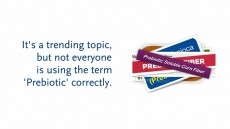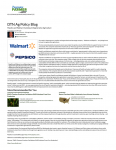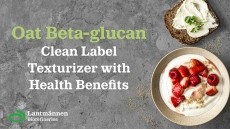Sugar reduction: Lactase grown directly in milk can create naturally sweet yogurt

Researchers from the Technical University of Denmark’s National Food Institute mutated a dairy strain of the streptococcus thermophiles bacterium – a fast-growing lactic acid bacterium which can serve as a catalyst for hydrolyzing lactose when combined with lactase.
Lactose is the naturally-occurring sugar component of milk, with around 50g of lactose contained per 1l of milk. By breaking down lactose, more sweet sugars are released, e.g. galactose and glucose. The process is used in yogurt and cheese production and typically requires manufacturers to source lactase enzymes separately.
But commercially-available lactase is made through a costly purification process then transported to the dairy, which can make the production process more costly and less sustainable.
To find out if the lactic acid bacteria-based lactase could break down milk sugar more efficiently, the scientists screened the mutated strain for variants with higher beta-galactosidase activity.
Two isolates were identified, both of which could break down lactose without the need for another catalyst. The strains can be grown at the dairy and in the milk, reducing costs for purchasing and transporting lactase.
What this means for manufacturers is that no-added-sugar yogurts can be developed without compromising on sweetness, since the sugars derived in the process are naturally contained in the milk.
The solution, which is being trialed in Denmark, could be adopted globally and ensure yogurt-makers can still achieve sweet-tasting products without worrying that the added-sugar content would adversely affect the nutrition content stated on the label. This is particularly relevant in the US, where the Food and Drug Authority introduced a new definition of 'healthy', under which dairy products that contain more than 2.5g of added sugars won't be able to claim the status.
"The solution is currently not intended for making 100% lactose-reduced dairy products, although I envision that future improved versions easily could manage to do that. However, additional funding is needed if we are to develop it further," Christian Solem, Associate Professor at DTU's National Food Institute told DairyReporter.
"We aim for increased sweetness, where I think the potential is large. Some additional sweetness is probably needed, but less added sugar should be good as well...
"Our approach works and it can easily be made even better," Solem continued. "The potential is immense and deserves to be investigated."
Source: Consolidated Bioprocessing in a Dairy Setting-Concurrent Yoghurt Fermentation and Lactose Hydrolysis without Using Lactase Enzymes
Journal of Agricultural and Food Chemistry
September 2022
https://doi.org/10.1021/acs.jafc.2c04191





















